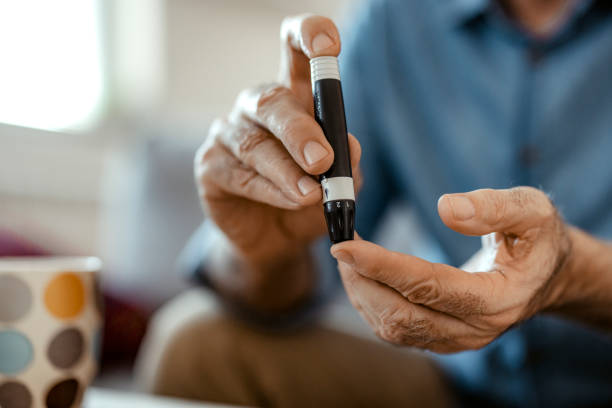For people living with diabetes, consistent care is crucial. While clinic visits play a vital role, much of diabetes management happens at home. The way you monitor your blood sugar, prepare your meals, and take your medications daily directly influences your long-term health. With the right approach, in-home care can help prevent complications, maintain stable glucose levels, and promote a better quality of life.
Contents
Regular Monitoring for Better Control
Blood glucose monitoring is the foundation of effective diabetes management at home. Knowing your numbers allows you to make informed decisions about diet, exercise, and medication.
People with Type 1 diabetes typically need to check their blood sugar multiple times a day, often before and after meals or exercise. Those with Type 2 diabetes may follow a schedule based on their doctor’s recommendations, which could be less frequent if their condition is stable.
Today’s technology offers convenient options for tracking glucose levels. Continuous Glucose Monitors (CGMs) provide real-time readings and trends, alerting you to high or low blood sugar before symptoms appear. For those using standard glucometers, keeping a log—whether on paper or through an app—helps spot patterns and adjust routines accordingly.
Always calibrate devices as instructed and store testing supplies properly to ensure accuracy. Regular monitoring also provides valuable data for your healthcare provider, enabling them to fine-tune your treatment plan.
Planning Balanced Meals with Purpose
Nutrition plays a central role in controlling blood sugar. Eating at home allows you to plan meals that are balanced, portion-controlled, and aligned with your specific dietary needs.
The goal is to maintain steady glucose levels by pairing carbohydrates with protein, fiber, and healthy fats. Whole grains, lean proteins, vegetables, and low-glycemic fruits should form the basis of your meals. Avoid refined sugars and highly processed snacks that can cause sudden spikes.
Meal timing is equally important. Consistent eating schedules help regulate blood sugar and prevent extreme highs and lows. Many find success with meal prepping—cooking batches of healthy foods and storing them in measured portions for easy access throughout the week.
Working with a registered dietitian can be especially helpful. They can tailor a meal plan to your preferences, cultural food traditions, and medical requirements, ensuring you get adequate nutrition without sacrificing flavor.
Staying on Track with Medications

Whether you take insulin or oral medications, adherence is key to preventing complications. Skipping doses or taking them inconsistently can quickly destabilize blood sugar levels.
Establishing a medication routine can help. Set reminders on your phone, use a pill organizer, or link your doses to daily habits—like brushing your teeth or preparing breakfast. If you’re on insulin therapy, learn the correct injection techniques and storage guidelines to keep the medication effective.
It’s equally important to understand how your medications work. Some need to be taken before meals, others with food, and some at specific times of day. Ask your healthcare provider to explain possible side effects and what to do if you miss a dose. Having a written medication schedule visible in your home can serve as a helpful reference for both you and any caregivers.
Incorporating Physical Activity Safely
While this article focuses on monitoring, meals, and meds, exercise is an important part of at-home diabetes care. Physical activity helps improve insulin sensitivity and supports weight management.
Even moderate exercise, such as brisk walking or light strength training, can positively influence blood sugar levels. Before starting a new routine, check your blood glucose and ensure you have a quick source of glucose on hand in case of hypoglycemia. Aim for activities you enjoy and can maintain long-term, whether it’s gardening, yoga, or dancing in your living room.
Building a Supportive Environment
Managing diabetes at home is easier with a supportive environment. Inform family members or housemates about your condition so they can assist during an emergency. Keep your home stocked with healthy foods, testing supplies, and medications to avoid last-minute shortages.
Some people benefit from joining online or local support groups, where they can share experiences, challenges, and tips with others facing similar journeys. Emotional well-being is a significant part of diabetes care, and feeling supported can make a real difference.
When to Seek Professional Help
Even with the best home management practices, certain situations require professional care. Seek medical attention if you notice unusual symptoms like persistent high blood sugar, frequent hypoglycemia, unexplained weight changes, or signs of infection.
Regular checkups remain essential for tracking your overall health, including your eyes, kidneys, and cardiovascular system. Your in-home efforts should work hand in hand with ongoing medical guidance.
Creating a Personalized Home Care Plan
Every person’s diabetes experience is unique. A well-designed in-home care plan should reflect your lifestyle, work schedule, and health status. By integrating consistent monitoring, thoughtful meal planning, and strict medication adherence, you can take control of your diabetes without feeling restricted.
The goal isn’t perfection—it’s consistency. Over time, these habits become part of your daily life, empowering you to live well and reduce the risk of complications.

